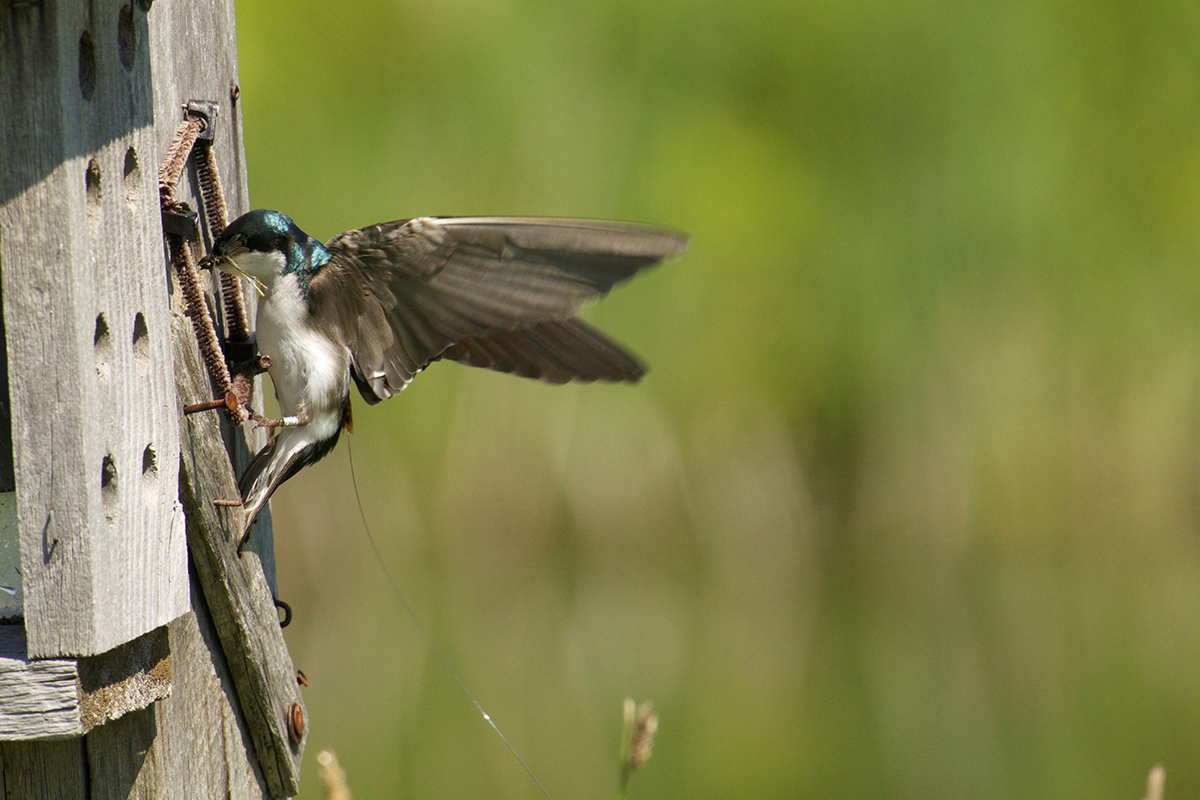Solar-powered tag allows tracking of songbird migration
By Amruta Byatnal


Professor of ecology and evolutionary biology David Winkler found a needle in a haystack: three Ithaca tree swallows among 10 million or so overwintering in Florida this January. The coup was made possible by Winkler’s development of the first lifetime-solar-powered tag for small songbirds, an invention that could revolutionize the way birds and other small animals are tracked and studied.
“This is something we’ve been awaiting for 20 years: the ability to follow small birds throughout their migrations,” said Winkler.
While large birds like eagles and ospreys can handle the extra cargo of a battery-powered tag, tree swallows themselves weigh only about half an ounce. To develop a lightweight alternative, Winkler collaborated with Cornell electrical engineers to create a tag powered by sunlight. Their prototype consists of a solar cell and radio chip covered by a thin film of Mylar, with a wispy wire antenna that transmits the bird’s unique ID number to any receiver listening within about a mile.
Last summer, Winkler and his students tagged 70 tree swallows in Ithaca. Tree swallows are known to migrate to Florida and the Caribbean in the winter, so Winkler and his former undergraduate students Teresa Pegan ’15 and Eric Gulson Castillo ’15 and their colleague David Craig from Willamette University traveled to Florida in January, where they used weather radar to locate large flocks of tree swallows that might harbor tagged birds.
“The overwintering birds roost together at night in huge numbers – at times more than a million in one place,” Winkler said. “Leaving the roosts, they fly far up into the air in such large numbers that they are visible on weather radar.”
Winkler and his team used weather radar to locate a flock foraging near Cape Canaveral. The birds were barely visible almost a mile away foraging low over a swamp, but the base station receivers picked up the pings from three different birds.
This spring, Winkler and Pegan are once again on the search for the birds as the scientists study the round-trip migration in Ithaca. Previous banding studies in the 1990s showed surviving adults almost always return in successive years to the same site, whereas most first-time breeders disperse away from their home site, but usually no more than about seven miles.

The new technology should help scientists establish the behavior of these young birds on their first return migration, Winkler said. “Now, with autonomous base stations at all our nesting sites and a mobile unit to be driven around all the roads in our vicinity, we should get the best look at dispersal that we have ever had.”
The next step is to improve their ability to detect the signals. Winkler hopes his team can couple longer-range detection with the ability to pinpoint the location of the signal. He is keen to connect his tags with a network of stations up and down the East Coast placed by other researchers to track birds during their migrations.
Winkler expects the next generation of tags will be of interest to other wildlife biologists, an effort bolstered by a $550,000 grant he received from the National Science Foundation. The tags – invented by Winkler and visiting scientist and engineer Rich Gabrielson; Space Plasma Physics Group senior engineer Steve Powell ’83, M.S. ’83; and Rob MacCurdy ’99, M.S. ’14, Ph.D. ’15 – are being commercialized through the Cornell Center for Technology Licensing.
Amruta Byatnal ’16 is a student writer for the College of Agriculture and Life Sciences.
Media Contact
Get Cornell news delivered right to your inbox.
Subscribe